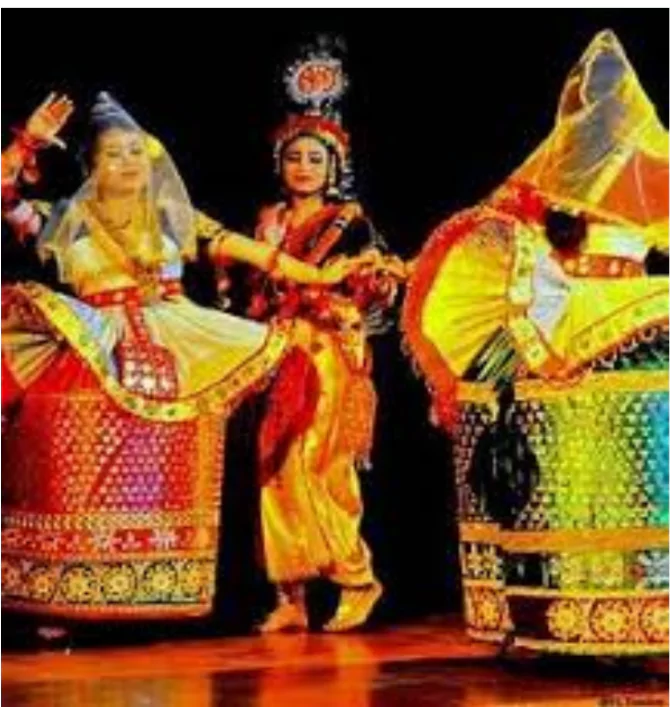Introduction
Manipuri classical dance, from Manipur, is characterized by its fluid movements, delicate footwork, and graceful gestures. Rooted in Vaishnavism, it often depicts themes from Hindu mythology, showcasing the region’s rich cultural and religious heritage.

Origin and Evolution of Manipuri Classical Dance
- It has roots associated with rituals, festivals, and legendary tales of gods and goddesses, like dances of Shiva and Parvati.
- It was in the reign of King Bhagyachandra that the popular Rasleela dances of Manipur originated.
- Manipuri dance gained prominence with the arrival of Vaishnavism in the 15th century.
- Rabindranath Tagore: Revived the dance form by introducing it in Santiniketan.
Enroll now for UPSC Online Course
Characteristics of Manipuri Classical Dance
- The dance themes of Manipuri often revolve around the stories of Gopis, Radha & Krishna.
- Costume: Includes an embroidered stiff skirt, a delicate white muslin skirt, a dark velvet blouse, and a traditional white veil.
- Krishna’s attire includes a yellow dhoti, a dark velvet jacket, and a peacock feather crown.
- Aspects: It incorporates masculine and feminine aspects.
- The masculine aspect of dance – the Choloms are a part of the Sankirtana tradition.
- Male dancers play the Pung and Kartal instruments during Sankirtana. [UPSC 2017]
- The rhythmic complexities are usually overlooked as the dancers do not wear ankle bells to stamp out the rhythms.
- It includes an essential posture Naga Bandha mudra, in which the body is connected through curves in the shape of ‘8’.
- The primary musical instruments are the Pung (or the Manipuri classical drum), Pena (a stringed instrument), cymbals, and flutes that accompany vocal singing.
- Ras, Sankirtana, and Thang-Ta are influenced by Manipuri dance.
- There are five principal Ras dances of which four are linked with specific seasons, while the fifth can be presented at any time of the year.
- In Manipuri Ras, the main characters are Radha, Krishna and the gopis.
- Sankirtana, a congregational singing in the form of Kirtan, accompanies the dance.
- Thang-Ta (the martial art dance tradition): Dancers use swords, spears, and shields to depict real fight scenes.
|
- Famous Proponents: Jhaveri sisters- Nayana, Suverna, Ranjana and Darshana, Guru Bipin Singha, etc.
Enroll now for UPSC Online Classes
Conclusion
- Manipuri classical dance, steeped in spirituality and tradition, embodies the essence of Manipur’s cultural identity.
- Its unique movements and expressions captivate audiences, preserving the rich legacy of this ancient dance form for generations to come.
![]() April 12, 2024
April 12, 2024
![]() 1883
1883
![]() 0
0
